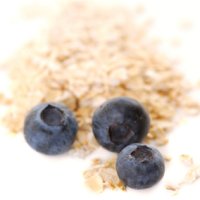What Percentage of Carbs, Protein and Fat Should You Eat?

One question I see a lot is “What percentage of carbs, protein and fat should I be eating?” It gets confusing because companies always seem to be pushing low carb, low fat or high protein eating.
It’s important to know how much carb, protein and fat you’re eating because they play different roles in your body. You want to give your body the right kind of energy — and everybody has different energy needs. Don’t eat ‘low this’ or ‘high that’ just because everybody else is doing it.
Let me quickly take you through why your body needs carbs, protein and fat, where you get them and what percentages are recommended.
To put it simply, the foods you eat are made up of carbohydrates – otherwise known as carbs – protein and fat. When your stomach digests the food you eat, the carbs, protein and fat are broken down into their simplest forms to be used by the body.
Percentage of Calories from Carbohydrates (Carbs)
Your body uses carbs as its preferred source of energy. You get the majority of your carbs from plant-type foods and milk products. When you eat carbs, you want to go for what’s called “complex” carbs and natural sugars – and you want to avoid “refined carbs.”
You get complex carbs from whole grains such as rice, oats and barley, whole grain breads and cereals, and starchy vegetables like potatoes, sweet potatoes, corn and squash.
You get natural sugars from foods such as fruits, non-starchy vegetables, and milk and milk products.
See: Top 5 Healthy Dark Green Vegetables
Refined or processed carbs are products that have been processed by machines, so that they’re not “whole” grains anymore. They’ve been stripped of certain parts.
They usually don’t have any nutritional value either – meaning they don’t have any vitamins or minerals. They’re what’s called “empty” calories.
Refined carbs are things like sugar, syrups, anything made with white flour, such as white bread, white pasta, cakes, pastries, muffins, bagels and – well, you get the idea. If it was made by machines, chances are it’s been processed.
See: How to Curb Cravings and Conquer a Sweet Tooth
A healthy person should aim to get 45% to 65% of their calories from carbs, with active individuals aiming for 55% to 65% of their calories coming from carbs.
Percentage of Calories from Protein
Your body uses protein to help build muscle and other tissue. It also helps in the transportation of vitamins, minerals, fat and oxygen throughout the body.
You get protein from sources such as beef, poultry, fish — basically, any type of meat — and from other sources such as eggs, nuts and seeds, and tofu.
A healthy individual should aim to get about 10% to 35% of their calories from protein.
See: Suzanne’s Low Calorie / High Protein Scrambled Eggs

Percentage of Calories from Fat
Fat is used as an energy source for the body but it also has other important functions, such as helping you absorb certain vitamins and produce certain hormones.
Some fats are healthier than others. Sources of good fat include olive oil and other healthy oils, nuts and seeds, fatty fish such as salmon and foods like avocados, olives and peanut butter.
A healthy individual should aim to get 20% to 35% of their calories from fat.
Now that you have an idea of what carbs, protein and fat can do for you and how much you need, it’s time to decide what percentages you want to aim for.
A good starting off point for the average individual is 50% carbs, 20% protein and 30% fat. If you’re more active, you may want to up the carbs to 55% or 60%.
You can set your carb, protein and fat percentage goals in the your FitWatch Calorie Tracker by going to Goals main page. (Don’t have a tracker account? Click here to create a free FitWatch Calorie Tracker account.)
As you track your carb, protein and fat percentages take note of how you’re feeling and whether you’re reaching your weight loss and fitness goals. You can fiddle around with the numbers as long as you stay within the recommended ranges – and as long as the three numbers add up to 100.
Setting carb, protein and fat percentage goals will help you balance out your energy needs, as well as give you a better understanding of the types of foods you’re eating.
Tools & Calculators
Free Online Calorie Tracker
Search Food Sources of Carbs, Protein and Fat
Must Read
How to Count Calories
References
American Council on Exercise Lifestyle & Weight Management Coach Manual
